Tyler, TX Pollen and Allergy Report for Summer 2023
Pollen Allergy Trends in Tyler, TX
When is pollen lowest in Tyler, TX?

February
Lowest month total PPM
Avg. PPM
When is pollen highest in Tyler, TX?

March
Highest month total PPM
Avg. PPM
How does pollen in Tyler, TX compare to Texas?
Tyler has a higher average PPM than the state of Texas.
Tyler yearly avg PPM:
Texas yearly avg PPM:
How does pollen in Tyler, TX compare to the USA?
Tyler has a higher average PPM than the USA.
Tyler yearly avg PPM:
USA yearly avg PPM:
Is pollen worse this year in Tyler, TX?
Spring 2023 was worse than spring 2022.
Spring 2023 PPM:
Spring 2022 PPM:
Average PPM in Tyler, TX
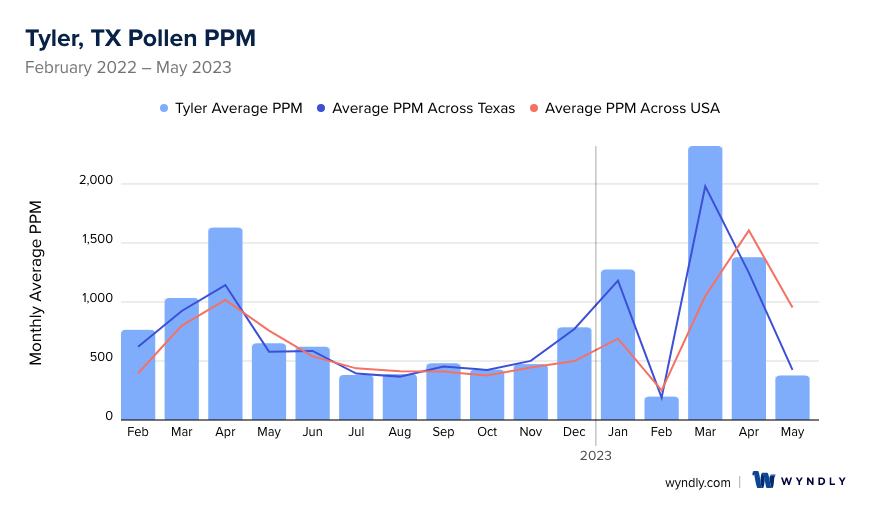
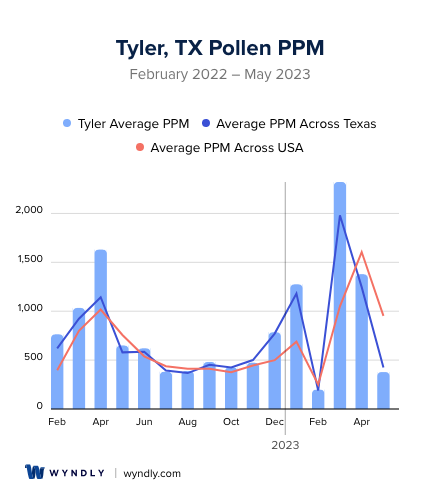
Tyler, TX Pollen and Allergy Breakdown by Month
Grass
When is grass pollen highest in Tyler, TX?
April has the highest grass pollen in Tyler, TX with an average PPM of
When is grass pollen lowest in Tyler, TX?
December has the lowest grass pollen in Tyler, TX with an average PPM of
Tree
When is tree pollen highest in Tyler, TX?
March has the highest tree pollen in Tyler, TX with an average PPM of
When is tree pollen lowest in Tyler, TX?
July has the lowest tree pollen in Tyler, TX with an average PPM of
Weed
When is weed pollen highest in Tyler, TX?
June has the highest weed pollen in Tyler, TX with an average PPM of
When is weed pollen lowest in Tyler, TX?
February has the lowest weed pollen in Tyler, TX with an average PPM of
Tyler, TX Pollen Monthly Breakdown by Pollen Type
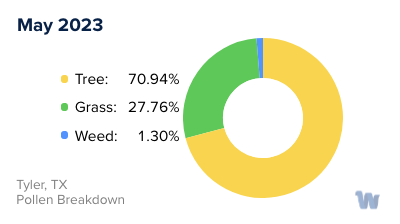
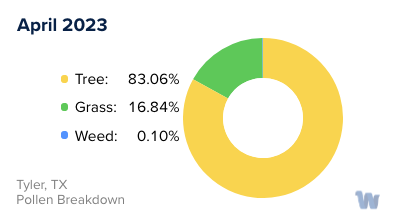
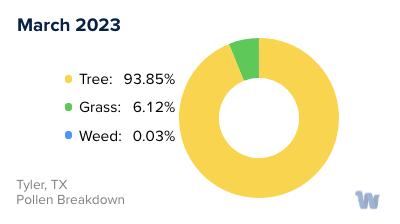
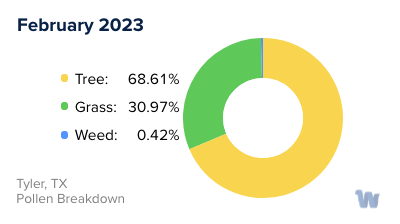
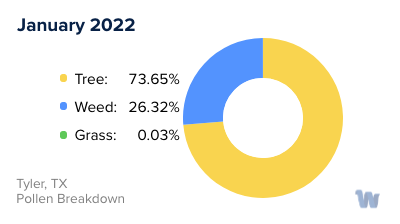
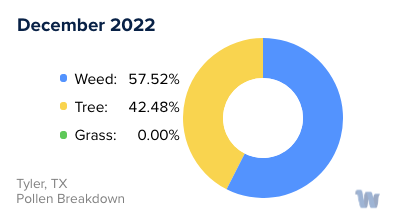

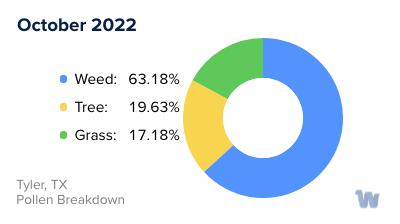
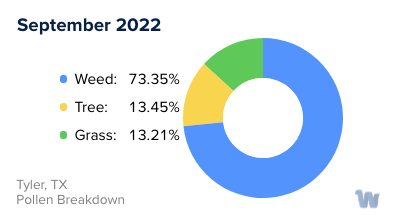

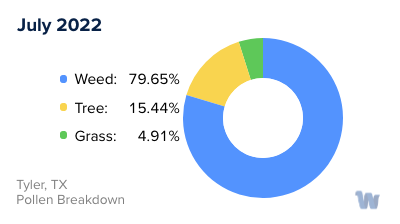
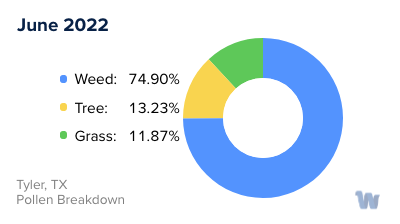
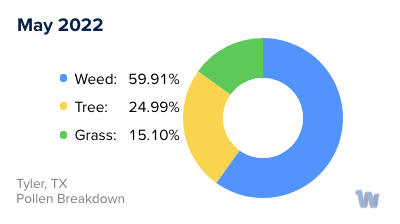
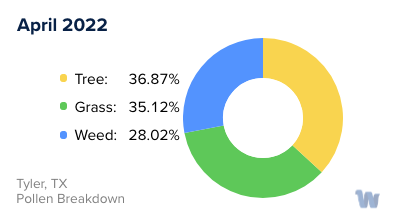
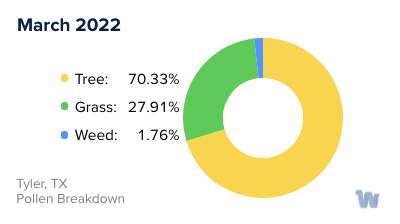
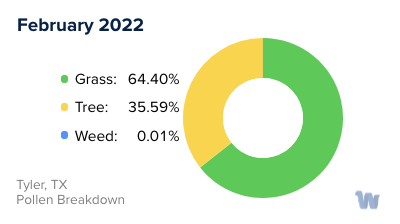
Pollen and Hay Fever in Tyler, TX
In the charming city of Tyler, Texas, renowned for its vibrant rose gardens, residents and visitors alike should be mindful of pollen allergies and hay fever. Pollen allergies, commonly referred to as hay fever, occur when the immune system overreacts to pollen from trees, grasses, and weeds. This picturesque city has an array of flora that contributes to the variety of pollen in the air.
In Tyler, spring is a beautiful season, but it is also when tree pollens are most prevalent. Oak, pine, and cedar are some of the trees that grace the city with their blossoms, but concurrently release copious amounts of pollen. This is the time when individuals sensitive to tree pollen may experience an escalation in allergy symptoms.
As the city transitions into the warmth of summer, grass pollens take center stage. Bermuda, Bahia, and Timothy grasses are common in Tyler and release their pollen from late spring to early summer. These grasses not only adorn parks and lawns but also become sources of allergens.
In the fall, Tyler's air is infused with weed pollen, with ragweed being the most notorious. This plant, though inconspicuous, has a significant impact on the well-being of those with sensitivities to its pollen.
It's important to recognize that Tyler's mild winters can also play a role in prolonging exposure to certain pollens. The overlapping seasons sometimes cause different types of pollen to be present simultaneously, making it imperative for residents to be cognizant of the types and timing of pollen in their environment.
In summary, Tyler's delightful greenery contributes to an ever-changing pollen landscape. From the abundant tree pollens in spring, the grass pollens in summer, to the pervasive weed pollens in fall, being aware of the types and seasons of pollen helps residents navigate life in this enchanting city with ease.

